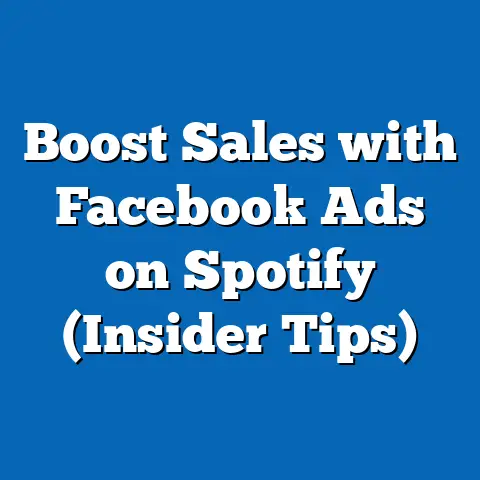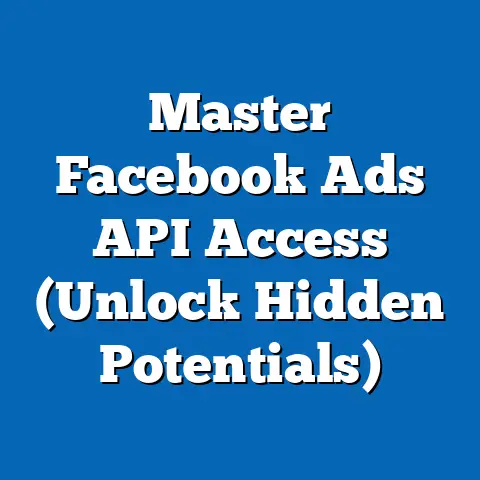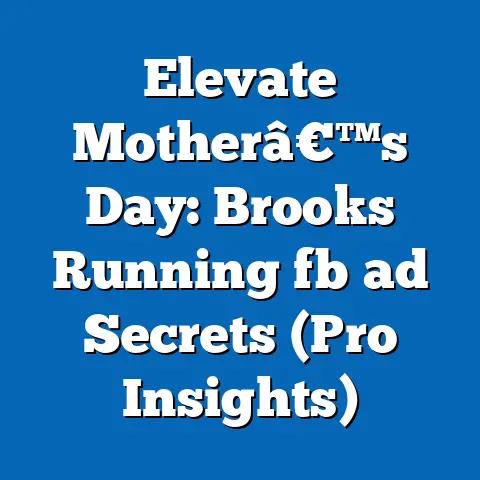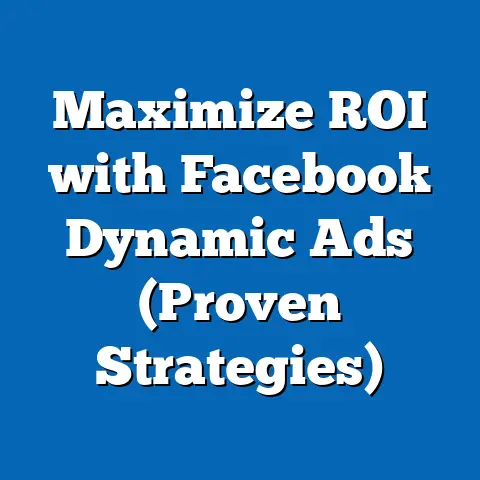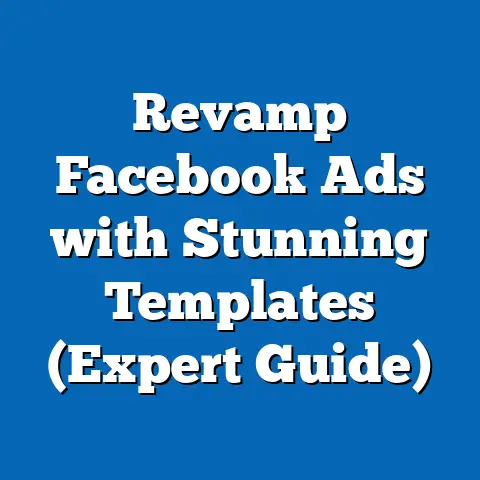Boost Engagement with Facebook Stories (Pro Insights)
Have you ever wondered why some brands seem to effortlessly capture attention on social media while others struggle to gain traction? In today’s digital landscape, standing out from the noise is more challenging than ever. That’s where understanding and mastering ephemeral content, particularly Facebook Stories, becomes crucial.
Why Facebook Stories Matter in Today’s Digital World
Social media marketing has undergone a dramatic transformation over the past decade. We’ve moved from static posts and carefully curated feeds to a world that craves authenticity and immediacy. Remember the early days of Facebook, when everything was about polished images and perfectly crafted updates? Now, users are drawn to content that feels real and unfiltered. This shift has paved the way for the rise of ephemeral content – content that disappears after a short period.
Enter Facebook Stories. Launched in 2017, Facebook Stories are short-form videos and images that vanish after 24 hours. They’ve quickly become a central part of the Facebook experience, offering a casual and engaging way for users and brands to connect. Think of them as a behind-the-scenes peek, a quick update, or a fun interactive experience.
As a digital marketing specialist, I’ve seen firsthand the impact Facebook Stories can have on engagement. In fact, according to Facebook’s own data, over 500 million people use Facebook Stories every day. That’s a massive audience! But simply being on Facebook Stories isn’t enough. You need a strategy to truly capture attention and drive meaningful interaction.
Engagement is the lifeblood of social media marketing. It’s what turns passive viewers into active participants, fostering brand loyalty and driving conversions. Facebook Stories, with their interactive features and immediate nature, provide a unique opportunity to boost engagement.
In this guide, I’ll take you on a deep dive into the world of Facebook Stories. We’ll explore why they’re so effective, how to create compelling content, and how to leverage interactive features to maximize engagement. I’ll also share real-world examples and actionable strategies that you can implement right away. Let’s unlock the full potential of Facebook Stories and take your Facebook marketing to the next level.
Section 1: Understanding Facebook Stories
What are Facebook Stories?
Facebook Stories are short-form, user-generated videos and images that disappear after 24 hours. They reside at the top of the Facebook app and website, making them highly visible. Unlike regular posts, Stories are designed to be consumed quickly and informally.
Think of them as a digital version of telling a story to a friend. They’re not meant to be perfect or overly polished. Instead, they’re about sharing a moment, an experience, or a thought in a relatable way.
Format and Features of Facebook Stories
Facebook Stories offer a variety of features that make them versatile and engaging:
- Duration: Stories can be up to 20 seconds long for videos and are displayed for a few seconds for images.
- Design Options: Facebook provides a range of creative tools, including text overlays, stickers, filters, and drawing tools, to enhance your Stories.
- Interactive Elements: This is where the real magic happens! Stories offer interactive features like polls, questions, quizzes, countdown timers, and more. These elements encourage user participation and make your Stories more engaging.
From my experience, the interactive elements are key. I’ve seen campaigns that had mediocre results until we added a simple poll. Suddenly, engagement skyrocketed!
User Engagement Statistics
The numbers speak for themselves:
- Over 500 million people use Facebook Stories daily (Facebook).
- Stories are becoming increasingly popular for discovering new products and brands.
- Many users prefer watching Stories over scrolling through their news feed.
These statistics highlight the immense potential of Facebook Stories as a marketing tool. If you’re not using Stories, you’re missing out on a huge opportunity to reach your target audience.
Key Takeaway: Facebook Stories are a powerful tool for connecting with your audience in a casual and engaging way. Understanding their format and features is the first step towards creating effective Stories.
Section 2: The Psychology Behind Stories
Why Stories Resonate: The Power of Storytelling
Humans are wired for stories. From ancient cave paintings to modern-day novels, stories have always been a fundamental part of our culture and communication. Stories help us make sense of the world, connect with others, and remember information.
In the context of marketing, storytelling is about more than just sharing information. It’s about creating an emotional connection with your audience. When you tell a story, you’re not just selling a product or service; you’re selling an experience, a feeling, or an idea.
FOMO and Authenticity
Two key psychological concepts drive user interaction with Facebook Stories:
- FOMO (Fear of Missing Out): Stories disappear after 24 hours, creating a sense of urgency. Users are more likely to engage with Stories because they don’t want to miss out on something interesting or important.
- Desire for Authenticity: Stories are often raw and unfiltered, providing a glimpse into the real lives of individuals and brands. This authenticity resonates with users who are tired of overly polished and staged content.
I remember working with a local bakery that was hesitant to use Stories. They thought their content had to be perfect. But once they started sharing behind-the-scenes glimpses of their bakers at work, their engagement went through the roof. People loved seeing the real faces behind the brand.
Expert Insights
“People don’t buy what you do; they buy why you do it.” – Simon Sinek
This quote perfectly captures the essence of storytelling in marketing. By focusing on your brand’s “why,” you can create a more meaningful connection with your audience and inspire them to take action.
Key Takeaway: Understanding the psychology behind storytelling can help you create more engaging and effective Facebook Stories. Focus on creating an emotional connection with your audience, leveraging FOMO, and embracing authenticity.
Section 3: Creating Engaging Facebook Stories
Visual Storytelling Techniques
Visuals are the backbone of Facebook Stories. Here are some tips for creating captivating visuals:
- High-Quality Images and Videos: Use clear, well-lit images and videos. Avoid blurry or pixelated content.
- Eye-Catching Graphics: Use graphics to highlight key information or add visual interest.
- Brand Consistency: Maintain a consistent visual style across all your Stories. Use your brand colors, fonts, and logo.
Maintaining a Consistent Posting Schedule
Consistency is key to building an audience on Facebook Stories. Aim to post regularly, even if it’s just a few times a week. This will keep your brand top-of-mind and encourage users to check back for new content.
I’ve found that having a content calendar specifically for Stories is incredibly helpful. It allows you to plan your content in advance and ensure that you’re posting consistently.
Optimizing for Mobile Viewing
Facebook Stories are primarily viewed on mobile devices. Make sure your content is optimized for mobile viewing:
- Vertical Format: Use the vertical format (9:16 aspect ratio) for your images and videos.
- Clear and Concise Text: Use short, readable text that is easy to see on a small screen.
- Call to Action: Include a clear call to action that tells users what you want them to do.
Leveraging User-Generated Content
User-generated content (UGC) is a powerful way to boost engagement and build trust. Encourage your audience to share their experiences with your brand and feature their content in your Stories.
Key Takeaway: Creating engaging Facebook Stories requires a combination of high-quality visuals, consistent posting, mobile optimization, and user-generated content. By following these best practices, you can create Stories that capture attention and drive results.
Section 4: Leveraging Interactive Features to Boost Engagement
Polls
Polls are a simple yet effective way to engage your audience. Ask a question related to your brand, product, or industry and let users vote.
Best Practices:
- Keep your questions simple and easy to understand.
- Offer a limited number of answer choices (usually two or three).
- Share the results of the poll with your audience.
Questions
The questions sticker allows you to solicit questions from your audience. This is a great way to gather feedback, address concerns, or simply start a conversation.
Best Practices:
- Encourage users to ask questions by offering a specific topic or theme.
- Answer as many questions as possible.
- Share your answers in a follow-up Story.
Quizzes
Quizzes are a fun and interactive way to test your audience’s knowledge and promote your brand.
Best Practices:
- Create quizzes that are relevant to your brand and target audience.
- Offer a mix of easy and challenging questions.
- Provide feedback on each question.
Countdowns
Countdowns are a great way to build anticipation for an upcoming event, product launch, or sale.
Best Practices:
- Clearly state the event or date that you’re counting down to.
- Use visually appealing graphics and animations.
- Remind users to set a reminder so they don’t miss the event.
Real-World Examples
- Sephora: Uses polls to ask users about their favorite beauty products.
- National Geographic: Uses questions to solicit travel tips from their audience.
- BuzzFeed: Uses quizzes to test users’ knowledge of pop culture.
I once helped a small clothing boutique use a countdown sticker to promote a flash sale. The countdown created a sense of urgency, and the sale was a huge success.
Key Takeaway: Interactive features are a powerful tool for boosting engagement on Facebook Stories. By using polls, questions, quizzes, and countdowns effectively, you can create more engaging and interactive experiences for your audience.
Section 5: Analyzing Performance and Insights
Why Analytics Matter
Analytics are essential for measuring the success of your Facebook Stories. By tracking key metrics, you can understand what’s working, what’s not, and how to improve your Stories over time.
Accessing Facebook Insights
You can access Facebook Insights for your Stories through the Facebook Business Suite or the Facebook app. Simply go to your Page, click on “Insights,” and then select “Stories.”
Key Metrics to Track
- Reach: The number of unique people who have viewed your Story.
- Impressions: The total number of times your Story has been viewed.
- Completion Rate: The percentage of people who watched your Story to the end.
- Taps Forward: The number of times people tapped forward to skip a segment of your Story.
- Taps Back: The number of times people tapped back to rewatch a segment of your Story.
- Replies: The number of people who sent you a message in response to your Story.
- Exits: The number of times people exited your Story before it was finished.
- Link Clicks: The number of times people clicked on a link in your Story (if applicable).
Interpreting the Data
- Low Reach: Your Story may not be reaching enough people. Try promoting your Story or targeting a different audience.
- Low Completion Rate: Your Story may not be engaging enough. Try improving your visuals, adding interactive elements, or shortening the length of your Story.
- High Taps Forward: People may be skipping over certain segments of your Story. Try making those segments more engaging or removing them altogether.
- High Taps Back: People may be rewatching certain segments of your Story. This indicates that those segments are particularly engaging or informative.
Iterating and Improving
Use the data you collect to iterate and improve your Facebook Stories over time. Experiment with different formats, features, and content types to see what works best for your audience.
Key Takeaway: Analyzing performance and insights is crucial for optimizing your Facebook Stories. By tracking key metrics and using the data to iterate and improve, you can create more engaging and effective Stories over time.
Section 6: Case Studies of Successful Brands
Case Study 1: Nike
Strategy: Nike uses Facebook Stories to showcase their latest products, feature athletes, and share behind-the-scenes content. They often use interactive features like polls and questions to engage their audience.
Results: Nike’s Facebook Stories have generated high levels of engagement and helped them build a strong brand presence on the platform.
Lessons Learned:
- Use Stories to showcase your products in action.
- Feature real people and athletes.
- Use interactive features to engage your audience.
Case Study 2: Airbnb
Strategy: Airbnb uses Facebook Stories to share travel tips, feature unique properties, and inspire wanderlust. They often use user-generated content to showcase their community.
Results: Airbnb’s Facebook Stories have helped them build a strong community and drive bookings.
Lessons Learned:
- Share valuable travel tips and inspiration.
- Feature unique properties and experiences.
- Leverage user-generated content to showcase your community.
Case Study 3: Wendy’s
Strategy: Wendy’s uses Facebook Stories to share humorous content, promote their menu items, and engage with their audience in a playful way.
Results: Wendy’s Facebook Stories have helped them build a strong brand personality and generate buzz on social media.
Lessons Learned:
- Don’t be afraid to be humorous and playful.
- Promote your menu items in a creative way.
- Engage with your audience in a conversational tone.
These case studies demonstrate the diverse ways that brands can use Facebook Stories to drive engagement and achieve their marketing goals. The key is to understand your audience, experiment with different strategies, and track your results.
Key Takeaway: Studying successful brands can provide valuable insights and inspiration for your own Facebook Stories strategy. Learn from their successes and adapt their strategies to fit your own brand and target audience.
Conclusion: The Future of Engagement is in Your Story
We’ve covered a lot of ground in this guide, from understanding the basics of Facebook Stories to exploring advanced strategies for boosting engagement. The key takeaway is that Facebook Stories are a dynamic and powerful tool for connecting with your audience and achieving your marketing goals.
Remember, Facebook Stories are all about authenticity, immediacy, and interaction. Don’t be afraid to experiment, try new things, and let your brand’s personality shine through.
I encourage you to start experimenting with your own Facebook Stories today. Track your progress, analyze your results, and iterate on your strategy over time. With a little creativity and effort, you can unlock the full potential of Facebook Stories and take your Facebook marketing to the next level.
The world of social media is constantly evolving, but one thing remains constant: the power of storytelling. By mastering the art of storytelling on Facebook Stories, you can create a more meaningful connection with your audience, build brand loyalty, and drive conversions. So go ahead, tell your story! The future of engagement is in your hands.

